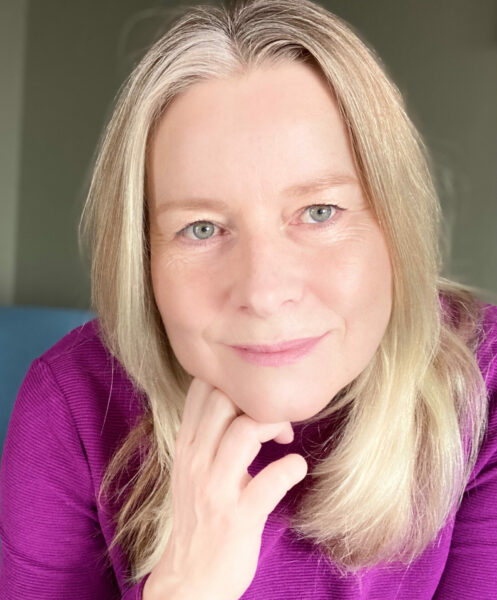Event Details
This Workshop-XL has already taken place.
Elke Mastwijk
The Netherlands
The forgotten anatomy of the CranioSacral system
A workshop on the influence of deep fascia tension on use and behaviour.
You can find the anatomy of the CranioSacral System in every anatomy book, yet most people don’t know much about it. That is why I call it the forgotten anatomy. As Alexander Teachers we work with the CranioSacral system every day even if we are not aware of it. How would it affect your teaching if you knew how deeply it influences use and behaviour? You are invited to come and find out in this workshop that combines theory with hands on experiences.
The CranioSacral system consists of the brain and the spinal cord. Which are bathed in a cerebrospinal fluid that has a rhythmic pulse, similar to blood pressure. This fluid is contained in a fascia sac which covers the brain and the spinal cord. A CranioSacral therapist senses the pulse and looks for any subtle restrictions in the flow of the fluid and excess tension in the fascia and helps release it. This facilitates freedom of movement and better coordination.
How can the CranioSacral system influence use?
Pupils who have suffered emotional trauma or who have been inflicted by physical trauma such as (car) accidents, surgery, orthodontics and long term illnesses can feel out of sorts for a long time. Trauma not only influences patterns of use but also creates tension patterns in all the fascia of the body, including those of the CranioSacral system. This in turn can interfere with the Primary Control in quite an unexpected way.
The workshop
In this workshop we will explore knowledge and insights from CranioSacral therapy on fascia tension. Certain fascia tension can actually make it impossible for your pupil to release the neck and experience the freedom of “forward and up”. We will take a look at the forces that are at work inside the skull, around the spinal cord and the sacrum. The workshop will start off with a basic introduction to the CranioSacral system through video animations. After which we will work “hands on” to gain a deeper understanding of how fascia pulls can interfere with use.
If you wish to prepare for this workshop I recommend this simple but well written book: “harmonizing your craniosacral System” by Daniel Agustoni. Available in English, German, French and Dutch. Or you can read the article which I wrote about this subject after presenting my work at the 2011 congres. Just click here: congresspapers2011
About Elke Mastwijk
Elke Mastwijk has been a passionate Alexander Technique teacher for over 25 years with a full-time practice in Amsterdam, the Netherlands.
Over the years one question became a quest for knowledge. “Why do some pupils make significantly better progress than others?”
She has been inspired by two pioneering colleagues. Firstly, by Hil Boode, who was a Dutch Alexander Technique teacher and CranioSacral therapist. Secondly, by Gitte Fjordbo, who spoke at the 2011 Alexander Technique Lugano congress about early childhood development in a special lecture titled: “when conscious control is not an option”.
After graduating as an Alexander Technique Teacher from ATON in the Netherlands in 1996 and a post graduate term with Walter and Dilys Carrington, she went on to study CranioSacral Therapy (2005) and Reflex Inhibition Therapy (2014). She is able to translate relevant knowledge from these disciplines to the Alexander Technique. She combines a special passion for understanding how fascia (connective tissue) restrictions affect use with an intense curiosity about early childhood development. How do we develop from lying on our back as babies to toddlers who can stand up and walk? How does an early childhood compromised by stress or health issues affect the adult nervous system and motoric skills?
Over the last 25 years, Elke has managed to connect the dots as to why some of her pupils make spectacular progress with the Alexander Technique and others do not. After presenting her work at workshops at previous AT Congresses in Lugano and Ireland, she has been invited to share her insights in the Alexander Technique communities of Switzerland, Belgium, Germany, Austria, and the USA.
She has a busy practice teaching’ the Alexander Technique as well as providing support through Reflex Inhibition for pupils seeking help with early childhood issues. She is a CranioSacral therapist for people as well as for horses and dogs.
emastwijk@planet.nl
www.elkemastwijk.nl
See also: Elke Mastwijk – Presenter Detail Page
Workshop-XL
Tuesday, 23 August 2022
14:45 h - 17:15 h (2.45pm-5.15pm)
Main Building
Floor: 2.OG (2nd floor)
Room: H 2036
CATEGORIES
Anatomy||Connections to other Modalities/Techniques
4
WORKSHOP STYLE
Fully Practical
Lecture
OPEN FOR
Teachers||Trainees||Everyone

